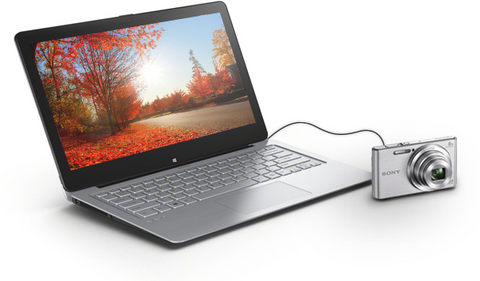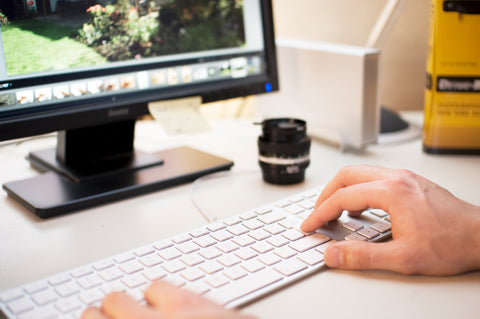About Stock Photography & How To Sell Your Pictures
Learn, Read & View Sample Images Before You Upload Your Stock Photos & Video

How to release your pictures and videos around the world in one easy step and place them in front of thousands of picture and video buyers instantly.
Upload all your Stock Images now and earn royalties each time they are downloaded
To begin uploading all your stock photos, click on the UPLOAD button at the bottom of this page which will take you to our partner website, one of the biggest picture agencies in the world. You will need to register with them first which is free. If you are accepted, you will be able to upload all your stock images and videos. Start selling your stock photos and videos today.

All About Stock Photography

Sometimes the simplest pictures turn out to be the best stock photos. This photo can be used to promote several products or it can be used for the travel industry.
Stock Photography Information + Questions & Answers about Stock Photography
![]()
What is stock photography?
What does “Royalty-Free” mean?
Marketing and selling your images
What are Editorial photos?
What makes a good stock photo?
Sample stock photos
Getting started as a stock photographer
Working with microstock agencies yourself
Picture subjects that are always in demand
Image formats accepted
Copyright information
When is a model release required?
Important business details about releases
Preparing a submission and editing your images
Receiving royalties for your images
Upload all your stock images now for free
Need help uploading your images or videos?
What is stock photography?
Stock photography refers to shooting images or photo illustrations on speculation and then submitting these images to a stock agency. Most stock images consist of landmarks, concepts, icons, generic imagery and events that could be used and reused multiple times for commercial design purposes. Book publishers, magazines, newspapers, ad and marketing agencies, web designers, graphic artists and creative firms use stock photography to fulfil the need of their assignments.
The copyright owner or an authorized agent defines a stock photograph as one that already exists and is available for licensing.
What does “Royalty-Free” mean?
Royalty free is a type of stock photo license that provides the buyer with an unlimited use of a photo in any media defined in the licensing terms. Royalty free is the opposite of “Rights Managed.” A rights-managed photo needs a specific license stating the audience, usage time, picture size and in which media the image will be used in.
What are Editorial photos?
Editorial photos are photos that have not been released for commercial use. These photos are used to support a news story in a magazine, newspaper or on a news type website.

Sample stock imagery related to the business world.
Marketing and selling your images
Some photographers place their work with one or more stock agencies while other photographers and/or freelancers may decide to market their own collection of stock photographs themselves, which may prove to be difficult, less profitable and very time-consuming.
When you have a stock agency sell your images, you will always earn more money than trying to sell your images yourself with no work, effort or time spent on your part. Stock agencies have large marketing and advertising budgets whereby your images can piggyback on that marketing channel. Thousands of buyers browse through their images every hour from around the world on their websites. Buyers can instantly search, view, purchase and download stock images instantly. The same picture can be sold over and over again in which case you continue to get paid royalties over and over again.
We ask photographers to do what they do best, which is taking great photos and allow a professional stock agency to do the selling, which is what they do best.
What makes a good stock photo?
A good stock photo is one that evokes emotion, tells a story and can stand by itself without a detailed caption. Your setups and compositions must be excellent but flexible enough to be incorporated into someone’s artistic work. The best stock images tell many stories rather than just one.

Many photos that appear in consumer magazines to illustrate articles are of average quality and sometimes downright boring, however, these photos fit an editor's needs at deadline time and end up being used. Less experienced photographers have an equal chance of competing against established big name photographers seeing their own work in print if it fits an editor's or buyer's needs.
A few tips: If you are not shooting people as your main subject but people are in your pictures, avoid shooting faces that are identifiable as you will most likely require a model release.
Always avoid logos or company names in your pictures. When shooting vehicles, license plates or car identities should not be recognizable.
Try to shoot pictures that can be used in multiple ways and/or formats. Before taking a picture, try to think of a slogan or catchy phrase that could be used to promote a product and/or service for a company. Advertising agencies are always looking for that perfect image to promote a product and/or service for a client. This is where the big money is. Some marketing agencies look for a picture then add the caption while others have the caption and try to find the perfect stock photo to match it for the product or service being marketed or advertised.
Use a digital camera with at least 10 megapixels but higher if possible. Digital cameras have come down in price in the last few years. The higher the megapixels, the more often your pictures will be sold and used in larger formats netting you more revenue per picture. Your images should always be sharp, well centred and correctly exposed. In some cases, it helps to leave some blank space above or below the image to allow agencies to add a catchy title or ad copy.
Obtaining property releases can sometimes be a real challenge. Try to avoid shooting private properties that will become difficult to obtain a signed property release later on.
Browse through picture galleries from several stock agencies on the online to view the millions of images currently on the market for ideas and shooting styles. You can learn a lot just by viewing images currently on the market.
Getting started as a stock photographer
Equipment for starting out in stock photography is minimal. A good digital 35mm D-SLR camera with a wide-angle (18mm-28mm), a zoom lens (70-210mm) and a flash unit is enough to get started depending on the subjects you prefer to shoot.

Buy a good camera bag. One that is small, lightweight, easy to carry and has a comfortable strap. Everything you need should fit inside. Domke has a good professional line of bags that will make you feel and look great.


If you are more on the professional side, you may have several pieces of equipment and able to cover any stock photo shoot or assignment given to you.
In order to start selling your work, you should establish a niche in the market. Your passion for photography will show when you target subjects you enjoy shooting unless you enjoy shooting all subjects.
Consumer magazines require photos for covers and to illustrate articles. Specialization is the key and you will have a better chance of getting published if you cultivate a certain shooting style and search out subjects that appeal to you artistically and personally.
Shoot what you know or would like to know and narrow your focus. If you like to photograph horses, study photos that appear in horse type magazines and/or publications. If scenic is what you enjoy shooting, search for “scenic photos” on several stock agency websites to get an idea of what is selling on the market.
Browse through different issues of magazines and look at the pictures being used in the ads as well as the pictures used to support stories to get ideas of what editors are looking for and using in their publications. Study the stock photos used on billboards, transit ads etc... for more ideas.

Scenic images are very popular, however, be creative and shoot unique pictures like this breathtaking shot which could be used to promote different products.
Tip: Shoot vertical as well as horizontal of the same subject to increase the odds of an editor or buyer choosing your photo for a specific magazine layout.
Most newspapers and magazines around the world have subscriptions with stock agencies and use several stock photos in every issue.
Working with microstock agencies yourself
Times have changed and the days of selling a stock photo for $300+ are pretty much over. Most buyers are now searching and buying images from microstock agencies where they can either buy a subscription and download a certain number of stock images on a daily, weekly, monthly or annual basis. Most stock images can be purchased today for a few dollars. Some stock agencies will sell you a block of credits which are then used to buy stock photos as you please.
It is easy to set up an account with a stock agency and submit as many images as you like free of charge. You must first submit a sample of your best work to see if your work qualifies. A screening process is very important in order to weed out the less desirable images and photographers. You can set up an account in minutes and begin uploading your images 24/7 with just about any microstock agency.
Microstock agencies will deal with all types of photographers with different levels of experience to a certain degree. There are usually no minimum number of images that must be submitted.


Picture Stock Worldwide has helped thousands of photographers sell their pictures that would otherwise be sitting in computer hard drives. Photographers can finally see their work published. Thousands of stock pictures are purchased every hour around the world. Pictures that you have already taken could very well be worth hundreds or thousands of dollars to you every month in recurring royalties. Its a great way to make an extra stream of income each month.
When a client buys and downloads one of your images, you get paid each and every time that same image is sold.
Some photographers have already quit their existing 9-5 jobs and are doing what they have always wanted to, which is taking pictures every day and earning a living doing what they have a passion for. We encourage you to join them today!
Picture subjects that are always in demand
Shooting stock photography can be a very rewarding and profitable business. Shoot subjects that can be used in several different industries to maximise your earnings.
Most microstock agencies will accept images of every imaginable subject matter on the planet except nudes, pornography, and any offensive material. Below is a general list of subject matters that most agencies accept. Should you have something that is not listed below, you are welcome to submit it as well. Only submit your absolute very best and sharpest images/work.
Below are a few sample stock pictures to give you an idea of what type of pictures can be used by companies promoting a product or service

Travel stock photography is one of the biggest sellers since thousands of travel related businesses all need fresh new photos for their websites and literature. Here are some sample travel pictures to give you an idea.







Shooting Food for the Restaurant Industry

Thousands of restaurants around the world rely on stock photos for images to be used in their menus and on their websites.
Food Pix








Animals




Cats & Dogs




Weather



Babies & Children
Transportation




Here are the basic picture categories Stock Agencies are interested in
|
Agriculture
Animals
Architecture
Art
Babies and Children
Backgrounds and Textures
Beauty
Birds
Business and Commerce
Cities and Regions
Couples (Gay, Straight & Transgender)
Creative Concepts
Design Elements
Diversity
Education
Entertainment
Environmental
Families
Finance
Fine Art
Food
Fun
Future
Government
Healthcare
Historic and Vintage
Holidays and Celebrations
Home
Humour
Industry
Landscape
Lifestyle
|
Maps
Mature Adults
Marine Life
Medical and Health
Military
Music
Nature
News
Objects
Occupations
Older Adults & Senior Citizens
People
Pets
Plants
Religion
Scenic
Science
Seasons
Space
Sports / Action / Recreation / Leisure
Still Life
Sunsets
Symbols
Technology
Textures
Transportation
Travel & Destinations
Urban
Vector Illustrations
Weather
Wellness Beauty & Spa
Youth
|
Image formats accepted
 Most microstock agencies will accept digital images in PC or MAC format.
Most microstock agencies will accept digital images in PC or MAC format.
Each agency will have their own guidelines to submit images so it is important to read their submitting guidelines before uploading your images. Submit your images in the highest resolution possible.
Copyright information
Each photographer who submits images must be the full copyright holder and owner of all his/her work unless the actual photographer has conveyed the copyright to you in a written and signed agreement. You will always retain the full copyright to all your images while they are on the worldwide market. By submitting your images, you are simply granting each agency and their sales partners permission to sell your images on your behalf.
According to the US Copyright Office, you do not have to apply for Copyright protection to ensure that your work is protected. Copyright is secured automatically when the work is created and when it is fixed in a copy for the first time.
 Copyrights can be valuable intangible assets. The Copyright Act of 1976 made it clear that photographers are the copyright owners of their images except when those images were made as an employee or when the photographer has conveyed the copyright to another party in a written and signed agreement. Copyright protection arises automatically when an original work of authorship is fixed in a tangible medium of expression. In the case of photographers, this means when you click the shutter. Registration with the Copyright office is optional (but you need to register before you file an infringement suit).
Copyrights can be valuable intangible assets. The Copyright Act of 1976 made it clear that photographers are the copyright owners of their images except when those images were made as an employee or when the photographer has conveyed the copyright to another party in a written and signed agreement. Copyright protection arises automatically when an original work of authorship is fixed in a tangible medium of expression. In the case of photographers, this means when you click the shutter. Registration with the Copyright office is optional (but you need to register before you file an infringement suit).
The use of a copyright notice is optional for works distributed after March 1, 1989. A copyright notice can be in any of these forms:
- © followed by a date and name.
- 'Copyright' followed by a date and name.
- 'Copy' followed by a date and name.
When is a model release required?
Whenever an image of a recognizable person is to be used to advertise, sell or promote a product or service, a written release is usually required. Even editorially, you may need a written release, specifically if the photo is used out of context. Obtaining a signed model release will only help agencies license your pictures faster and more frequently.
Important business details about releases
The photographer accepts all liability for any model release issue that may arise from a recognizable individual in the image. Please do not submit images which you do not have a current 'Model Release' for in your files. Otherwise, those images can only be used for 'Editorial Purposes Only' and not for advertising or marketing purposes. Stock agencies will take the necessary steps to prevent the unauthorized use of any images that do not have model releases however, they are not liable for any misuse of the images that may result from the use of the images.
You do not need releases for large crowds however the danger of a claim grows as the size of the crowd diminishes.
Public personalities are fair game editorially, assuming there is no libel involved. Advertising use is a whole other matter since the possibility of endorsement by the personality comes into play.
Also, like any contract, model releases do not prevent models from suing; it should prevent them from winning provided you were honest at the outset. If you are shooting for stock, don't give your model(s) a line about this being an assignment for a well-known publication and the release is just a formality. That would be a misrepresentation and can get you into legal trouble.
If you are unable to provide each agency with a signed model release for any of your images with identifiable people, they will still accept those images however they would edit them and decide if they should be used for 'Editorial Purposes Only.'
Some agencies will only accept their own model release forms while others will accept a generic model release form. Check with each agency’s guidelines.Preparing a submission and editing your images

Your images must be clear and sharp in order for them to appear in print unless you have images that were shot with a blur effect which sometimes creates great stock photos. Do not submit any washed-out (too light), dense (too dark), out of focus or poorly composed images. It is important that you edit your own work before submitting your images. You can ask a friend or family member what they think of your submission before submitting/uploading your images.
Receiving royalties for your images



Always keep your camera with you since you never know
when the perfect opportunity will arise to capture that perfect picture.
Need help uploading your images or videos? Tech support is just a call or email away!


Upload all your Stock Images and Video Now




 Most microstock agencies will accept digital images in PC or
Most microstock agencies will accept digital images in PC or 



